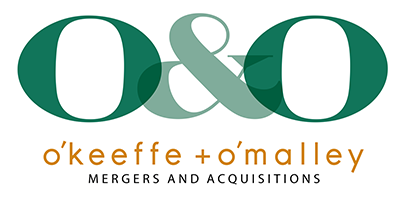Save Hundreds of Thousands of Dollars by Minimizing Working Capital
Jun 14, 2019
Minimizing Working Capital
Minimizing a business’s working capital prior to a sale can yield hundreds of thousands of dollars to an owner when selling. When a buyer is acquiring a business, they are usually buying the business as a going concern. As part of that going concern, they are purchasing most of the tangible and intangible assets and some liabilities of the company which include the net working capital. If net working capital is $500,000 or $1,500,000 it normally doesn’t change the value of the business. So if you can run the business with a lower working capital, that’s money you can take out of the business prior to a sale and put in your pocket.
Working capital is defined as the net of current assets less current liabilities. Current assets usually include cash, accounts receivable, inventory and prepaid expenses. Current liabilities usually include accounts payable, accrued expenses, sales tax payables, lines of credit and current portion of long-term debt. These assets and liabilities are usually the lifeblood of a business and they change daily.
When a business is sold, some components of the working capital are taken out of the working capital calculation or are minimized. Sometimes it’s negotiated that all cash is eliminated as part of the calculation. Other times, a portion of the available cash can be left in as part of the working capital calculation in order for the new owner to continue to run the business immediately after a sale, but excess cash can be excluded.
Current portion of long-term debt or notes payable are not left in or included in the calculation. Lines of credit (LOC) can be included as part of the calculation if one can justify that it funds the high fluctuations of inventory or receivables, but if the LOC is just ongoing debt that an owner hasn’t paid off, it won’t be included in the calculation.
Balance Sheets
Now that we know what is usually included and excluded in a working capital calculation, how much of each should be included? This is negotiable but usually focuses on one of several balance sheet dates. We believe the fairest method is to use the trailing twelve months (TTM) balance sheets that are averaged.
We have also used the most recent year-end balance sheet of the seller or the most recent monthly balance sheet prior to closing. One of these balance sheets is selected for the working capital calculation; then the difference between the selected working capital calculation balance sheet and the closing working capital balance sheet will adjust the purchase price upward or downward.
So running your business while lowering your cash (distribute to owners), accounts receivable (collect sooner), inventory (purchase in small quantities or don’t order until necessary) and extending your accounts payable (don’t pay until you have to), accrued liabilities (extend when you can) will lower your net working capital and the working capital amount an owner gives to a buyer at closing. If you can lower your working capital by $500,000 that’s your money to keep.
We have occasionally sold businesses that have been operated with a negative net working capital. If current Liabilities are higher than current assets, it works out well for the seller. The only caveat at closing is that the buyers are not going to pay for a negative working capital, so the requirement is that the seller needs to deliver working capital that is at least zero, which is the closing working capital the buyers purchase.
This just illustrates that if you can minimize your businesses working capital and it doesn’t negatively impact the operations of the business, you can convert the lowered working capital to cash and put the cash in your pocket.
